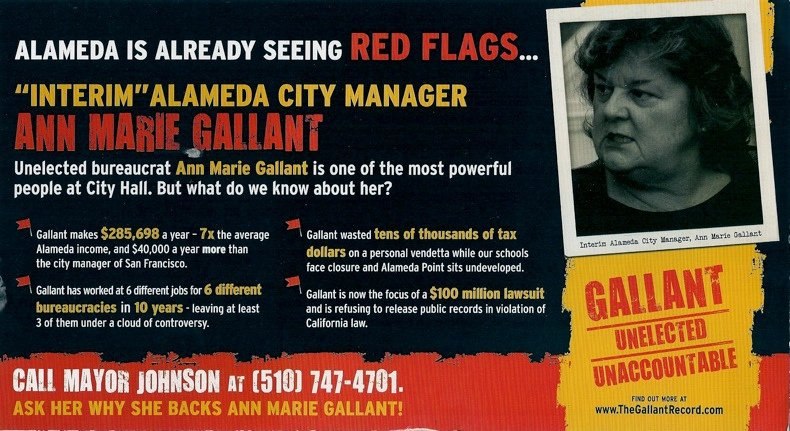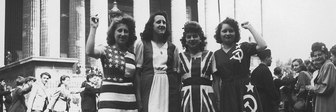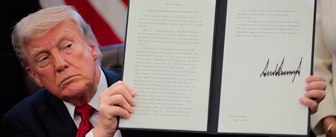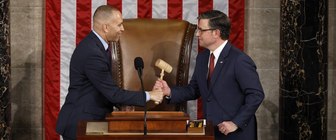As the 2010 midterm election came to a close, pundits and observers were claiming it was the most negative campaign ever. While I doubt such a claim is true, the Wesleyan Media Project does have some data that suggests the 2010 elections may at least have been the most negative in recent years.[1] By their count, 54% of ads aired during the fall in House and Senate elections were negative and another 20% were contrast spots.[2] The pundits were not alone here. The public also thought the campaign was more negative in the past. In a survey at the end of October by Pew, 67% of the public thought there were more negativity and mudslinging than in previous years. Only 13% of Americans thought it was less.[3]
In general, citizens do not like negative campaigns—a judgment shared by most observers in the news media. I have long been puzzled by this negativity about negativity. Attacks are part and parcel of democratic politics. Consider that the Tea Party was founded on negativity by criticizing the actions of the Democrats and President Obama. By attacking those in power, this movement reshaped American politics. Negativity is as American as apple pie, yet so few appreciate such fine home cooking.
My goal here is to advance our appreciation of negativity and its apple pie qualities. Toward that end, I will advance and then test two hypotheses that help us build a better appreciation of negativity. The first is that the public draws a distinction between “negativity” and “criticism.” That is, the former is more acceptable than the latter. The public associates “negativity” with unwarranted, unreasonable, and over the line attacks. By contrast, the public views “criticism” as more legitimate and reasonable. If true, then perhaps part of the problem is that we need to be more careful in how we label and think about attacks in campaigns.
The second hypothesis, while obvious, provides an opportunity to reflect on our assessments of negativity in campaigns. The hypothesis is partisans will have very different reactions to attacks, depending on the subject of the attack. Republicans, for example, will tend to find negativity aimed at the Democrats fair while negativity aimed at the Tea Party as unfair. The reverse will hold for Democratic partisans. This observation should come as little surprise given the long standing importance of partisanship. But if there are wide gaps in judgments by partisans, such a finding underscores that assessments of the merits of negativity is usually a political judgment and not one that we can cloak in claims of objectivity. In other words, what one group thinks is a legitimate attack, another complains is illegitimate. The actual attack is the same, but the interpretation is not. Complaints about negativity need to be interpreted with the understanding that strong partisan lenses are often at work. This point becomes of greater value when we are reminded that the news media these days are often supporting partisan causes and, therefore, their coverage of attacks during campaigns will surely show this kind of pattern.
So what do the data say about these two hypotheses? To test the first, I used a split ballot design where half the sample randomly received the following question: “There has been a lot of negativity aimed at the Democratic Party during this campaign. Do you think this negativity has been fair?” The other half of the sample saw instead: “There has been a lot of criticism aimed at the Democratic Party during this campaign. Do you think this criticism has been fair?” The only difference between the questions was the use of the term “negativity” or “criticism.” The same two questions were asked about the Tea Party. I thought focusing on the Tea Party would be more interesting than the GOP, since the former was a greater source of controversy.
The differences in response operate in the right direction, but only offer modest confirmation of this first hypothesis. Frankly, I anticipated larger differences. For example, 19% of the public felt the negativity aimed at Democrats was “unfair.” The proportion drops to 14% when the question asks about “criticism” of the Democrats instead of negativity. The gap for the Tea Party works in the same direction, but shrinks just to 3 percentage points: 29% felt negativity was “unfair” and 26% felt criticism was “unfair.” Probably the more interesting finding is that the public, in general, felt attacks (i.e. criticism or negativity) on the Tea Party was less fair than those attacks the Democrats. Such a finding speaks to the unhappiness with the Democrats, but it may also be a small piece of evidence that the public believes those in power should be subject to greater scrutiny.
The second hypothesis that partisanship affects how one judges negativity draws very strong support. The size of these differences serves as a powerful reminder that judgments about attacks during campaign are very much shaped by where one sits politically. As a first cut, just 8% of those surveyed viewed negativity aimed at both the Democrats and Tea Party as “Fair” or “Unfair.” That is, less than 10% of the public offered consistent assessments of the fairness or unfairness of the attacks. In stark comparison, 20% of the public thought the attacks against the Tea Party was “unfair” while attacks against the Democrats were fair. On the flip side, another 12% felt attacks on the Tea Party was “fair” while attacks against the Democrats were “unfair.” More than a third of the sample offered different judgments, yielding a four-fold difference between those who were consistent and inconsistent. That gap obviously hints at the upcoming partisan differences.
Using the seven point party identification scale, not a single “strong” Republican thought the attacks against the Tea Party were fair. This is quite amazing. In fact, among all Republicans, just 5% judged the negativity aimed the Tea Partiers to be “fair.” Yet consider that 60 percent of “strong” Democrats did view the attacks on the Tea Party as fair. Among all Democrats, the proportion stands at 50 percent. On the flip side, 70% of “strong” Republicans thought the attacks on the Tea Party “unfair.” Only 6% of “strong” Democrats share that judgment.
The same story holds when judging negativity aimed at Democrats. Among “strong” Republicans, 72% deemed such attacks as “fair” and only 1% as unfair. Among “strong” Democrats, 50% deemed such as attacks as “unfair” and 6% as “fair.” These are obviously very large differences, confirming the general point. It is perhaps worth mentioning that a few “strong” Democrats see some merit in the attacks on their own party—surely another reflection of the costs of being in power and the responsibility that entails.
The gaps presented here underscore why it is so hard to forge a consensus in the news media or in the public on whether any attack is fair or unfair. That judgment is so bounded up by partisanship that an objective, unbiased assessment is near impossible. In many ways this reminder is an obvious one. But in an increasingly partisan press, it is worth being reminded about the obvious. And in anticipation of what will surely be a highly negative campaign in 2012, it may well pay to have additional reminders as the battle for the Republican nomination starts to heat up in just a few months and with the general election soon to follow.
[1] http://election-ad.research.wesleyan.edu/files/2010/11/WesMediaProject_ToneRelease_110110.pdf.
[2] Travis Ridout presented these proportions in a public forum at Wesleyan University on December 3rd, 2010.
[3] Survey by Pew Research Center for the People & the Press. October 27 - October 30, 2010.










